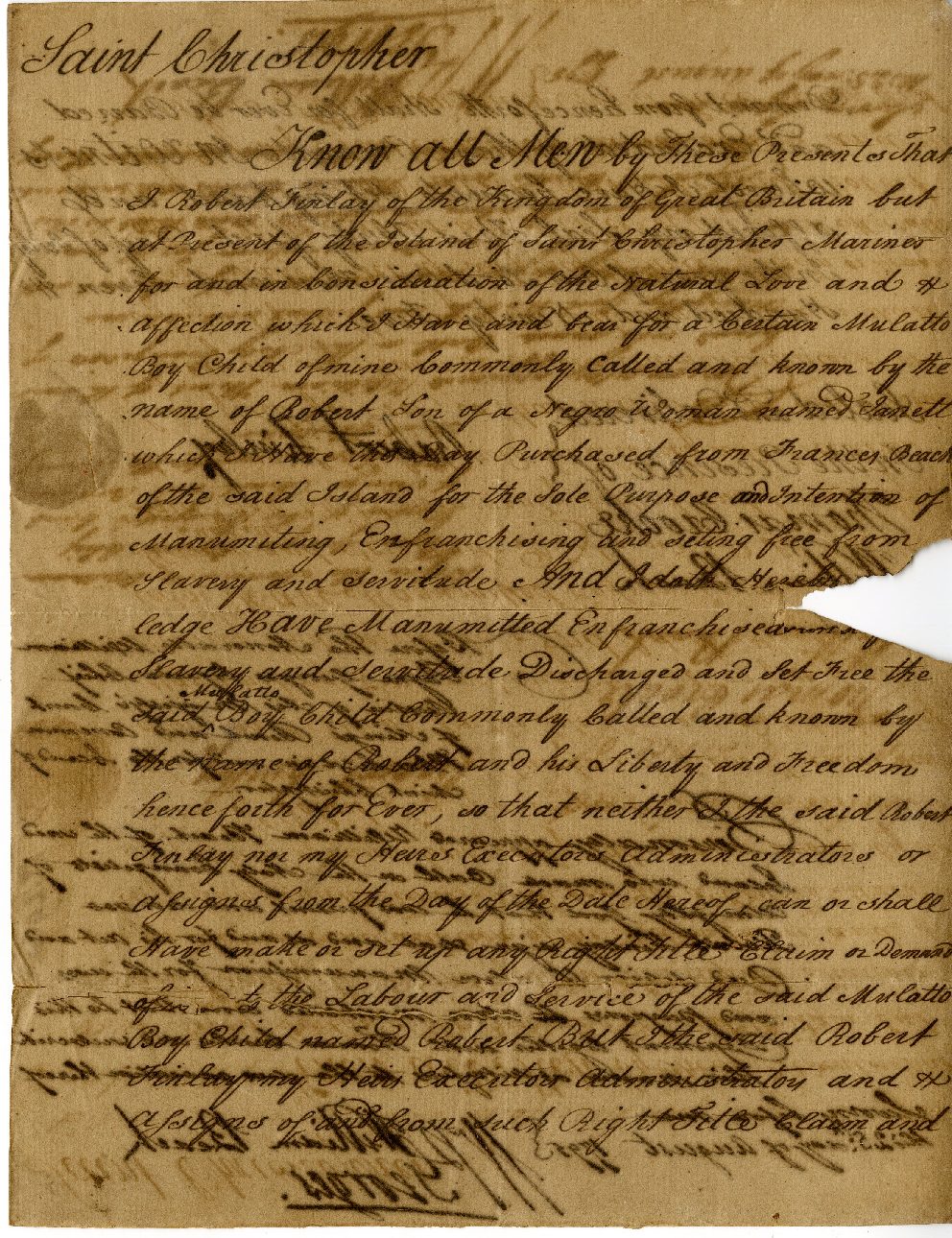Manumission 1795

Saint Christopher
Know all men by these presents that I Robert Finlay of the Kingdom of Great Britain but at present of the Island of Saint Christopher Mariner for and in consideration of the natural love and affection which I have and bear for a certain mulatto boy child of mine commonly called and known by the name of Robert son of a negro woman called Janett I have this day purchased from Francis Beach of the said island for the sole purpose and intention of manumitting and setting free from slavery and servitude and I doth hereby acknowledge have manumitted enfranchised and freed from slavery and servitude discharged and set free the said mulatto Boy Child commonly called and known by the name of Robert and his liberty and freedom henceforth forever so that neither I the said Robert Finlay nor my heirs executors administrators and assigns from the day of the date hereof can or shall can or shall have make or set up any right title claim or demand of the labour and service of the said mulatto child named Robert but I the said Robert Finlay my heirs executors administrators and assigns of and from such right title claim and demand from henceforth shall for ever be barred and excluded by these presents In witness where of I have hereunto set my hand and affixed my seal this thirty first day of July in the year of Our Lord one thousand seven hundred and ninety five. ROBERT FINLAY
Sealed and delivered
In the presence of
THOMAS CROOKE
WILLIAM BEACH
A manumission was an official document that freed an enslave person. Often it involved the purchase of freedom but sometimes it was drawn up as a reward to an enslaved person, or as in this case, to free a relative.
In the Anglophone Caribbean children took the status of their mother which meant that if she was enslaved, they were too. Men who had children with enslaved women tried from time to time to free them. This did not happen all the time and the registers of slaves had numerous enslaved workers described as mulatto or mestee. A mulatto was the child of a black mother and a white father, and a mestee was the child of a mulatto woman and a white father.
Although the enslaved had ways of making money, they did not always opt to use it to manumit themselves. The life of a freed enslaved worker was far from secure. There were those who preferred the “security” of the enslaver’s household which also involved the provision of food, shelter and clothing to the uncertainties of life as a free agent. In cases where they felt unhappy, they might even have asked for permission to find a new owner. Besides the insecurities of making a living there was also the threat of re-enslavement.